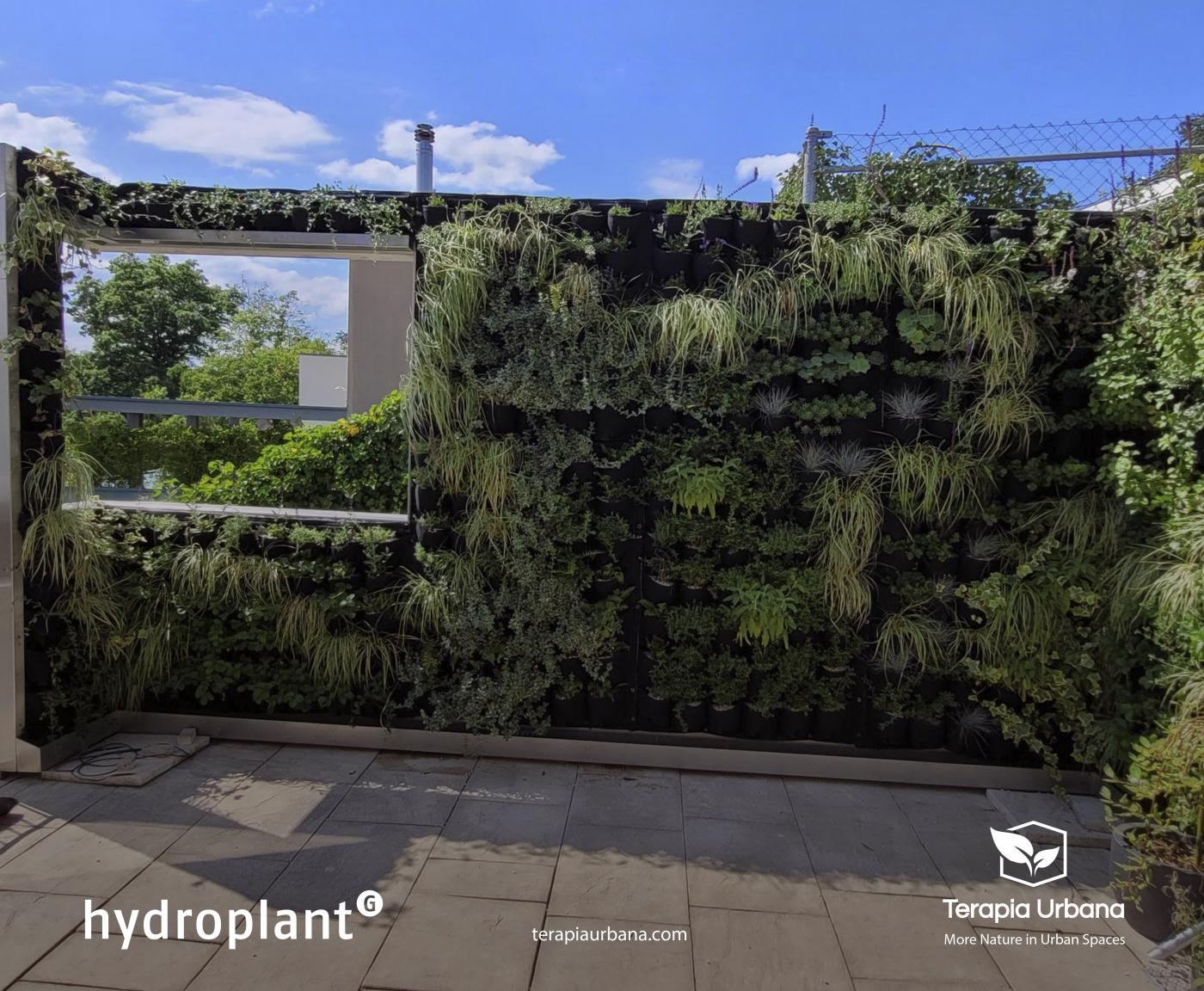Urban greening has become an essential tool for revitalizing our spaces. A green wall is a powerful way to connect with nature and improve our urban environment. Living walls have become an innovative solution for limited spaces, providing a unique opportunity to integrate nature into places where it once seemed impossible.
Vegetation helps purify the air, absorb noise, and regulate temperature, contributing to a more comfortable and pleasant environment. Additionally, they can host a wide variety of plants, adding harmony and vitality to any space.
The Beginnings of Living walls in History
Living walls have a long history of being admired throughout the world. The Hanging Gardens of Babylon are the earliest recognized instance of a Living wall, if we look back in time. They were likely terraced terraces made of huge stones and covered in bushes, flowers, and trees.
Later, steep terraced Living walls were discovered in pre-Columbian America and ancient Indian architecture. Roman architecture emphasized how buildings fit into their surroundings with expansive porticos and galleries that led to hanging gardens. The Romans also planted trees on the tombs for their emperors and structures used for institutions.
Early 20th-century “organic architecture,” a movement that advocates harmony between human habitat and the natural world and was started by Scandinavian architects and the American Frank Lloyd Wright, continued to emphasize the importance of vegetation. Climbing plants were incorporated into the English “Garden City” movement and placed on building facades.
Due to new building methods based on practical ideas that did not promote green façade, the usage of Living walls in Europe decreased in the 1930s.
Professor Stanley Hart White: The Inventor of Living Walls
Stanley Hart White is considered the father of modern Living walls. In 1938, he patented a system for vegetated walls, although his invention did not have much success beyond prototypes in his backyard in Illinois.
Patrick Blanc and Modern Green Walls
Patrick Blanc is considered the true promoter and creator of the current green walls. Since patenting his system in 1988, Blanc has designed numerous installations worldwide. For example, the “Caixa Forum” building in Madrid, installed in 2008, was the first Living wall of its kind in Spain.
Blanc specialized in tropical jungle plants and observed how certain plants could live without soil naturally, as long as they had water, light, and nutrients. Based on this knowledge and experience, he invented Living walls in the form of vegetated walls, using species of different colors, shapes, and textures to create a living work of art that evolves.
Living Walls on a Global Scale
William McDonough once said, “Turn buildings into trees and cities into forests.”
Living walls are now being used widely across the globe. This practice has been embraced by cities all over the world, including New York, Singapore, Paris, and Madrid. They now serve as a representation of sustainability in many cities.
Many factors have contributed to the rise in popularity of living walls. First of all, they provide a novel remedy for the space shortage that occurs in heavily crowded metropolitan areas. Buildings’ vertical spaces can be used to create green spaces that will help the environment and improve the city’s air quality.
They help reduce carbon footprint by absorbing carbon dioxide and releasing oxygen, thus contributing to climate change mitigation. They also aid in building insulation, acting as an additional layer of thermal insulation and reducing the energy consumption required for heating or cooling.

